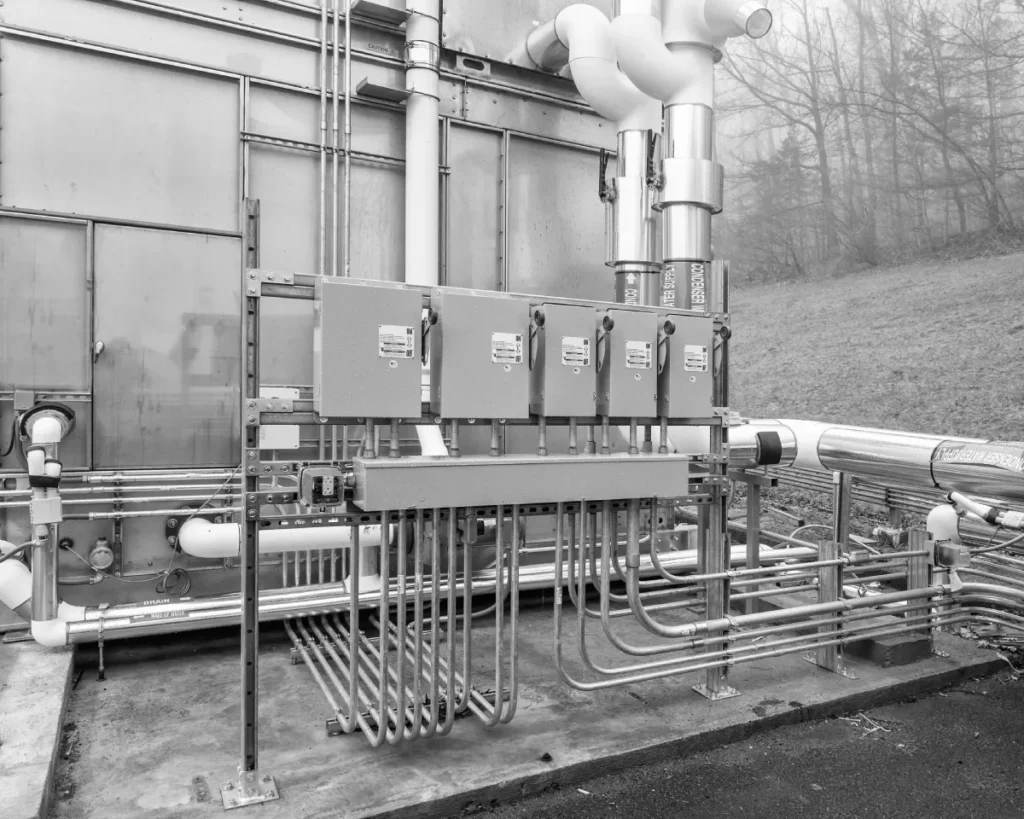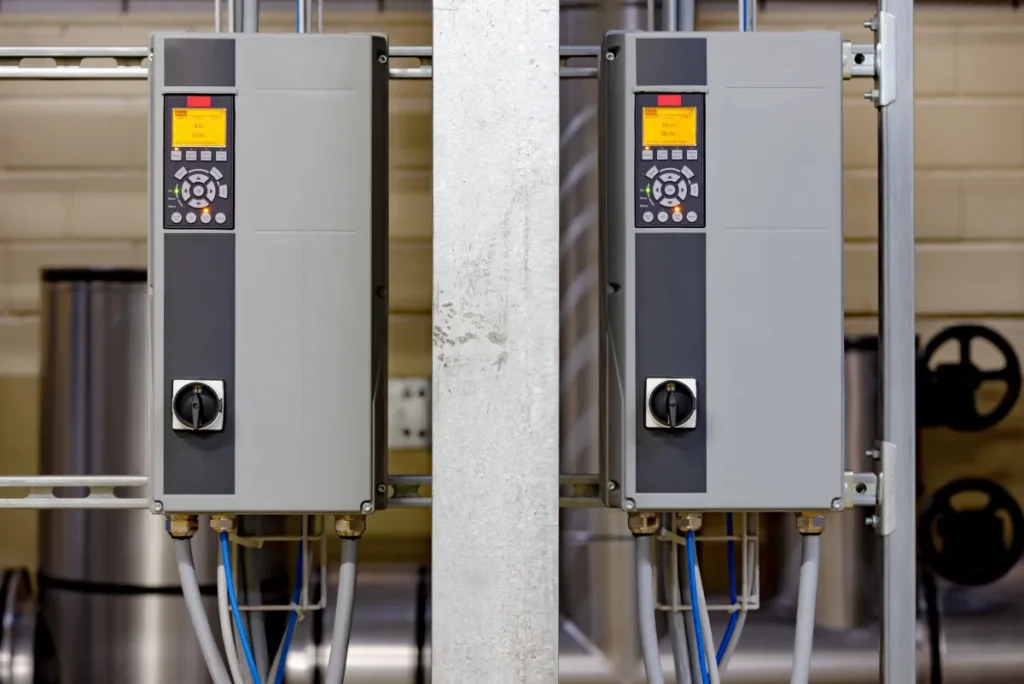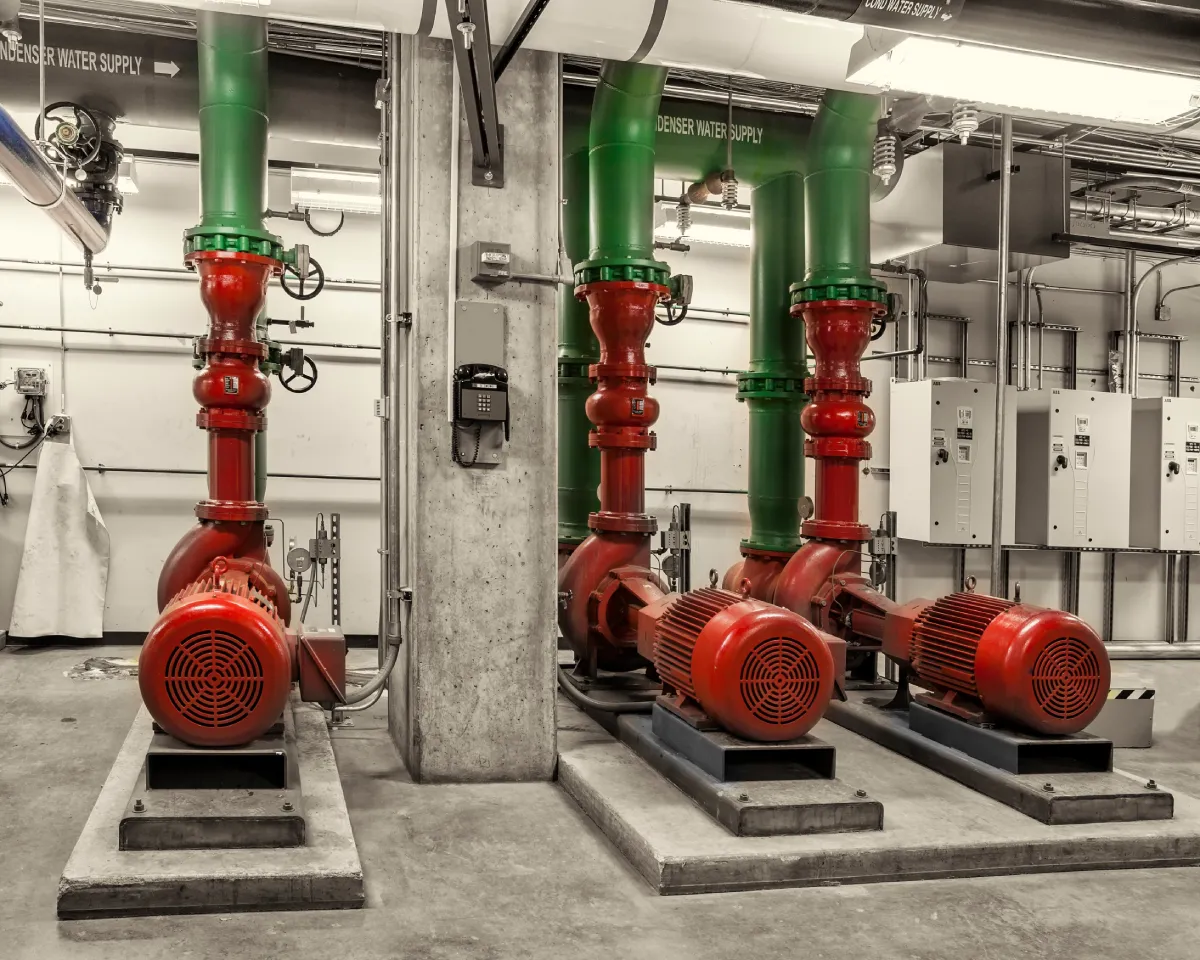Variable frequency drive pump technology is one of the most effective ways to optimize energy consumption. As industries continue to grow and innovate, the use of VFD pumps has also become increasingly widespread due to their ability to adjust the speed and performance of pumps in response to demand. This adaptability enables more efficient operations, helping businesses reduce energy waste while maximizing their return on investment (ROI). The growing utilization of these pumps reinforces their history of measurably reducing energy costs, extending equipment life, and increasing operational reliability.
In current industries, being efficient and saving costs play a crucial role in achieving success – especially for energy-intensive industries (e.g., mining, oil & gas, and heavy industries). With energy consumption accounting for a significant portion of operational costs, these industries face the complex challenges of managing energy consumption effectively. Saving energy is not only crucial for competitiveness, but it is also essential in achieving sustainability objectives.
Understanding Variable Frequency Drive (VFD) Pump Technology
A variable frequency drive pump (VFD) is a highly sophisticated technological approach to managing the speed and torque of an electric motor by adjusting the frequency and voltage supplied to the motor. This fine-tuning enables tighter control over the flow and pressure of a pump, allowing for highly efficient operation tailored to the specific application requirements.
Typical pumps operate at full speed regardless of actual demand, resulting in unnecessary energy usage during periods of lesser demand. In contrast, a VFD pump operates the motor at variable speeds, utilizing energy only when needed, thereby eliminating waste and reducing operational costs. This technology enables the pump to match the required flow without over-pumping, a common issue with conventional pumps.
Variable frequency drive technology is particularly beneficial for a range of pump types, including centrifugal and submersible pumps, which are commonly used in industrial operations. Centrifugal pumps, widely used in applications such as water treatment, oil extraction, and chemical processing, greatly benefit from variable frequency drive pumps, which can adjust speed in response to fluctuating system demands. Similarly, submersible pumps used in mining, wastewater treatment, and dewatering applications can be optimized for energy efficiency through VFD pump control, offering significant savings in energy costs while maintaining effective performance.
These pumps accurately adjust operating parameters, which guarantees that systems use only the energy necessary to accomplish specific tasks. In addition to reducing energy consumption, variable frequency drive pumps also help equipment last longer. Investing in these pumps makes sense for industries seeking to improve both their environmental impact and their bottom line.
Moreover, Variable frequency drive technology enhances the performance of various pumps commonly used in the industry, including centrifugal and submersible pumps. Centrifugal pumps are widely used to transfer liquids in various applications, including water treatment, oil extraction, and chemical processing. Variable frequency drive pumps enhance efficiency by enabling system speed to adjust according to changing system conditions. Submersible pumps are also used in various applications, including mining, wastewater treatment, and dewatering, that can greatly benefit from the adoption of VFD technology control due to the energy savings achieved through optimized VFD operation, while still providing effective pumping performance.
In addition to energy savings, these pumps further enhance efficiency by precisely controlling the pump’s operating parameters. This means that VFD-controlled systems will only use the energy needed to accomplish those tasks. As a result, not only do Variable frequency drive pumps reduce energy consumption, but they also extend equipment life. These pumps can be a solid investment for businesses seeking to enhance energy efficiency, lower costs, and improve their environmental impact.
The inclusion of variable frequency drive pumps results in increased energy efficiency, reduced maintenance expenses, and ultimately, improved functionality. In industries where energy efficiency and reliability of equipment are paramount, variable frequency drive pumps are an innovative technology development.
Calculating Cost Savings with VFD Pumps
One of the most significant advantages of implementing a variable frequency drive pump is the potential for substantial energy savings. These pumps operate by adjusting the motor speed to match the specific needs of the application, rather than running at full capacity continuously. This ability to adjust speed in response to demand results in reduced energy consumption, ultimately leading to lower operational costs.
The energy savings associated with these pumps are often calculated using the affinity laws, which state that the power required by a pump is proportional to the cube of the speed ratio. The general formula for calculating power savings is:
Power Savings=(1−(New SpeedOld Speed)3)×Old Power\text{Power Savings} = (1 – (\frac{\text{New Speed}}{\text{Old Speed}})^3) \times \text{Old Power}Power Savings=(1−(Old SpeedNew Speed)3)×Old Power
For instance, if a pump’s speed is reduced from 100% to 80%, the savings can be calculated as follows:
(0.8)3=0.512(0.8)^3 = 0.512(0.8)3=0.512
So, the savings in power consumption would be:
1−0.512=0.488or48.8%1 – 0.512 = 0.488 \quad \text{or} \quad 48.8\%1−0.512=0.488or48.8%
This example demonstrates that reducing the pump speed by just 20% can result in a nearly 50% reduction in energy consumption. This is particularly beneficial in applications where the pump is not required to operate at full capacity for extended periods, resulting in significant cost savings. VFD pumps allow companies to fine-tune operations and reduce over-pumping, ensuring that energy is consumed only as needed.
It is essential to note that the accuracy of savings calculations depends on the motor load and the number of hours the pump operates. To obtain an accurate estimate of energy savings, the actual motor load during pump operation should be recorded, and the operating hours should be factored into the measurement as well. Otherwise, entities will be unable to understand the true cost savings associated with implementing these pumps into their systems.
Real-World Applications of VFD Pump Technology

The applications of variable frequency drive (VFD) pumps are extensive and span multiple industries, all with an emphasis on the energy and operational efficiencies that VFD pump systems can provide. Below are examples of pumps in operation in several key industries.
Mining: Tailings Management, Slurry Pumping, and Dewatering
Variable frequency drive pumps are very useful in mining applications, including tailings management, slurry pumping, and dewatering. Mining businesses can utilize this pump to adjust the speed of their pumps according to the task’s specific requirements, thereby reducing energy consumption during periods of low demand. For example, in slurry pumping, lowering the pump speed can dramatically reduce energy expenditures while maintaining performance. Furthermore, during dewatering procedures, these pumps help maintain regular flow rates, reduce equipment wear and tear, and ensure the operation runs smoothly and effectively.
Oil and Gas: Offshore and Onshore Oil Extraction Processes, Fluid Transfer
In the oil and gas sector, both offshore and onshore oil extraction benefit from these pumps, offering significant advantages. With a VFD pump, even possible to control the speed of the pump and ensure that the fluid transfer can exceed energy efficiency consumption if no fluid is required. If demand is reduced, for example, or if fluids are transferred at a lower rate, the variable frequency drive pumps operate adaptively, providing energy savings and increased system efficiency as the equipment operates at the required speed based on the demand measure. This control also helps reduce cavitation, wear, and tear, and minimize excess energy usage, all while contributing to improved reliability of fluid transfer operations.
Municipal and Infrastructure: Water Treatment and Wastewater Pumping
In municipal and infrastructural projects, these pumps are essential for water treatment and wastewater pumping systems. By regulating the pump speed based on flow demand, municipalities can ensure that they consume only the appropriate amount of energy, resulting in lower operational expenses. These pumps, for example, enable accurate control of flow rates in wastewater treatment facilities, allowing for the optimization of processes such as filtration and aeration. Using this pump, towns can minimize energy consumption during off-peak hours while maintaining operating efficiency, resulting in long-term cost savings.
Variable frequency drive pumps are utilized in various sectors to achieve not only energy savings but also extended equipment life and enhanced process control. The flexibility to adjust the pump speed to match demand ensures that businesses can reduce energy waste, enhance system reliability, and achieve significant cost savings over time. Industries that use variable frequency drive pumps make a wise investment in both operational efficiency and profitability.
Additional Benefits Beyond Energy Savings
Extended Equipment Life
One of the primary benefits of installing a variable frequency drive pump is reduced mechanical wear and tear. Traditional pumps, which operate at full speed regardless of demand, often experience unnecessary strain, leading to premature wear on bearings, seals, and impellers. In contrast, these pumps adjust the motor speed to meet the task’s precise requirements, thereby reducing mechanical stress. This progressive acceleration and deceleration causes fewer shocks to the system, increasing the life of the equipment. By minimizing mechanical strain, variable frequency drive pumps can significantly reduce the frequency of repairs and replacements, resulting in more reliable operations over time and lower total maintenance costs.
Reduced Downtime
Another major benefit of these pumps is the reduction in downtime. Traditional pumps often experience abrupt starts and stops, which can result in electrical surges and mechanical stress that may lead to equipment failure. Variable frequency drive pumps mitigate these risks by providing a “soft start” and “soft stop” feature, which gradually ramps the motor up to speed and decelerates it smoothly when stopping. This not only reduces electrical spikes but also lowers the mechanical stress on the system, leading to fewer breakdowns and repairs. The result is reduced downtime, allowing operations to run more continuously, which improves overall productivity and reduces the costs associated with maintenance and unscheduled shutdowns.
Improved Process Control
VFD pumps provide enhanced process control by enabling precise adjustments to pump speed, which directly affect flow and pressure. Unlike traditional pumps that operate at a constant speed, a variable frequency drive pump can be fine-tuned to optimize the flow rate according to real-time requirements. This ability to control pump speed with greater accuracy enables better control over various processes, including water treatment, slurry pumping, and fluid transfer. By adjusting pump speeds to meet specific operational needs, these pumps help improve the efficiency of these processes, reduce energy waste, and ensure that systems operate within their optimal performance range. The result is not only energy savings but also improved operational precision and productivity.
ROI and Long-Term Financial Impact

The long-term savings associated with variable frequency drive pumps go far beyond energy consumption. The combination of energy savings, reduced maintenance costs, and extended equipment life makes VFD pumps a wise investment for companies aiming to improve their financial performance. These pumps help reduce operational costs in various ways, resulting in significant cost savings over time.
Long-Term Savings Through Reduced Energy Costs
As discussed earlier, these pumps can significantly reduce energy costs by adjusting pump speeds to match actual demand, rather than running at full speed continuously. This ability to match motor speed with process requirements results in more efficient energy use, especially in applications where demand fluctuates. The energy savings alone often justify the initial investment in these pumps. For industries such as mining, oil and gas, and municipal water systems, where pumps run continuously for long periods, the cumulative energy savings can be substantial.
Lower Maintenance Costs and Extended Equipment Life
In addition to energy savings, these pumps contribute to lower maintenance costs by reducing mechanical wear and tear. The smooth operation of variable frequency drive pumps, with their ability to control motor speed, helps prevent the breakdowns and repairs that often occur with traditional pumps. Over the pump’s lifespan, this reduction in maintenance needs translates into significant cost savings. By extending the life of the pump and its components, these pumps help companies avoid the capital costs associated with frequent replacements.
ROI Calculation and Payback Period
The ROI for these pumps is commonly assessed by comparing the original investment in the system to the continuous cost reductions throughout the pump’s lifetime. The payback period is the time it takes for energy savings and lower maintenance costs to cover the initial cost of the variable frequency drive pump system. In many situations, industries have a payback period of 1-3 years, depending on factors like as energy costs, operational hours, and application. Once the payback period is complete, businesses begin to reap the full benefits of the pump, with continued savings immediately contributing to increased profitability.
For example, in a high-energy mining operation, using this pump technology for slurry pumping can yield energy savings of up to 50%. Over the course of a few years, the energy savings alone can pay the cost of the system, with the firm benefiting from ongoing savings. This makes pumps not only a cost-effective option but also a critical aspect in enhancing the company’s overall financial health.
Variable frequency drive pumps offer a strong return on investment for enterprises of all sizes by focusing on energy efficiency, low maintenance, and extended equipment life. The long-term financial benefits of using variable frequency drive pumps are obvious: lower operational costs, increased profitability, and more sustainable business practices.
Cost of Implementing VFD Pump Technology
The initial cost of implementing this type of pump technology can vary significantly depending on several factors, such as motor size, pump type, and the complexity of the control system. While these pumps are generally more expensive than traditional pumps, the long-term savings they provide through energy efficiency, reduced maintenance, and extended equipment life make them a worthwhile investment.
Initial Costs of Purchasing and Installing VFD Pumps
The cost of a variable frequency drive pump includes not only the pump itself but also the associated components necessary for installation. These include the VFD controller, electrical wiring, and possibly upgrades to the existing electrical infrastructure. The installation process requires skilled technicians to ensure proper integration into the system.
- Motor Size: Larger motors generally cost more to operate and require more substantial VFD controllers, which can increase the initial cost of the system. The size of the motor will be directly linked to the pump’s energy consumption and its specific application needs.
- Type of Pump: Different pump types, such as centrifugal, submersible, or diaphragm pumps, may require varying levels of customization when installing VFD systems. The complexity of the pump and its required specifications will influence the overall cost of the system.
- Control System: The complexity of the control system is another key factor. For instance, a basic variable frequency drive pump setup may have fewer features and be less costly. In contrast, advanced systems with automated control features, data monitoring, and integration with other machinery will increase the price.

Factors Influencing Cost
Several factors affect the cost of implementing this kind of pump technology, including:
- Motor Size: Larger pumps with higher power requirements naturally come with higher costs, both for the pump itself and the VFD needed to operate it.
- Pump Type: As mentioned, different types of pumps may require additional customization, which can impact both the pump cost and the VFD system cost.
- Control System Complexity: More advanced VFD pumps, featuring remote monitoring, system diagnostics, and integration with other systems, can increase both initial costs and installation time.
Payback Period Based on Energy Savings
While the initial investment in a variable frequency drive pump may be higher than that of a traditional pump, the payback period is typically shorter than many realize. Payback periods can vary, but on average, companies see a return on investment (ROI) within 1 to 3 years, depending on factors such as operational hours, energy rates, and the system’s efficiency. After this point, the savings from reduced energy consumption and lower maintenance costs continue to contribute directly to profitability.
For example, a pump in a water treatment facility or a mining operation that runs for several hours each day can achieve energy savings of up to 50%, helping offset the initial cost relatively quickly. Once the payback period is met, the ongoing savings from energy and maintenance costs contribute to long-term financial benefits, making this pump a cost-effective solution over its lifespan.
How to Choose the Right VFD Pump for Your Operation
Selecting the right pump for your operation requires careful consideration of several key factors to ensure the system meets both operational and financial objectives. For procurement heads and engineering managers, it’s essential to evaluate the following aspects when choosing a variable frequency drive pump:
Key Considerations for Selecting a VFD Pump
- Pump Type: Different applications require different types of pumps. Centrifugal pumps are widely used in water treatment, while submersible pumps are common in dewatering and slurry pumping applications. When selecting this kind of pump, consider the specific requirements of the application, including the required flow rate, pressure, and system layout. Ensuring that the pump is suitable for the intended operation is crucial for maximizing efficiency.
- Pump Size and System Compatibility: The size of the variable frequency drive pump must be compatible with the system into which it will be integrated. The motor size should match the system’s load requirements to ensure efficiency and avoid under- or over-sizing the pump. Compatibility with existing infrastructure, including piping and control systems, is also crucial to ensure seamless integration.
- Energy Efficiency and Performance Requirements: Consider the energy efficiency of these pumps and how it aligns with your operational goals. Energy-efficient pumps will not only lower operational costs but will also help reduce the environmental impact of your operation. Evaluate the pump’s performance characteristics, including flow range, pressure stability, and adaptability to varying operating conditions.
- Supplier Support and After-Sales Service: The quality of support and after-sales service provided by the supplier is a crucial consideration when selecting a pump. A reliable supplier will offer maintenance services, technical support, and warranties to ensure that your investment is protected. Additionally, access to spare parts and expert advice is crucial for minimizing downtime and maintaining optimal pump performance over time.
Checklist for Decision-Makers When Selecting a VFD Pump
To help streamline the selection process, here’s a checklist for decision-makers to follow when choosing a pump:
- Define application requirements: Determine the specific needs of your application, including flow rate, pressure, and operational environment.
- Assess motor and pump size: Ensure that the motor size and pump capacity align with your system’s needs.
- Evaluate energy efficiency: Look for pumps that offer the best energy savings based on your usage patterns.
- Check compatibility: Ensure that the variable frequency drive pump is compatible with your existing system and infrastructure.
- Review supplier support: Choose a supplier that offers comprehensive after-sales service, including installation, training, and ongoing maintenance.
- Consider long-term costs: Look beyond the initial purchase price and consider long-term savings from reduced energy consumption, lower maintenance, and extended equipment life.
By carefully evaluating these factors, procurement heads and engineering managers can ensure they select the right pump that delivers optimal performance, energy savings, and a strong return on investment.
Key Takeaways: Achieving Energy Efficiency and ROI with VFD Pumps
In conclusion, these pumps are a highly successful alternative for generating significant cost savings and improving energy efficiency in industrial processes. Variable frequency drive pumps can significantly minimize energy usage by accurately regulating motor speed to match the specific demands of the application, as opposed to typical pumps that run at full speed regardless of demand. The outcome is significant energy bill savings, as well as decreased maintenance costs due to reduced mechanical wear and smoother system performance.
The long-term economic benefit of these pumps goes beyond the immediate energy savings. Companies can benefit from prolonged equipment life, decreased downtime, and increased process control over time, resulting in more dependable and efficient operations. When calculating the return on investment (ROI), the combination of reduced energy consumption and lower maintenance requirements results in a short payback period, often within 1 to 3 years, making these pumps an excellent investment for industries looking to improve both operational efficiency and bottom line.
Investing in this kind of pump technology not only promotes long-term cost savings but also coincides with environmental objectives. These pumps help enterprises minimize their carbon footprint by consuming less energy, leading to a more sustainable and environmentally responsible operation.These pumps offer a strong and cost-effective solution for businesses seeking to optimize their operations, enhance energy efficiency, and reduce long-term expenditures. Explore the VFD pumps offered by Plus Pumps Australia and contact us for more information to find the ideal option for your unique requirements.



